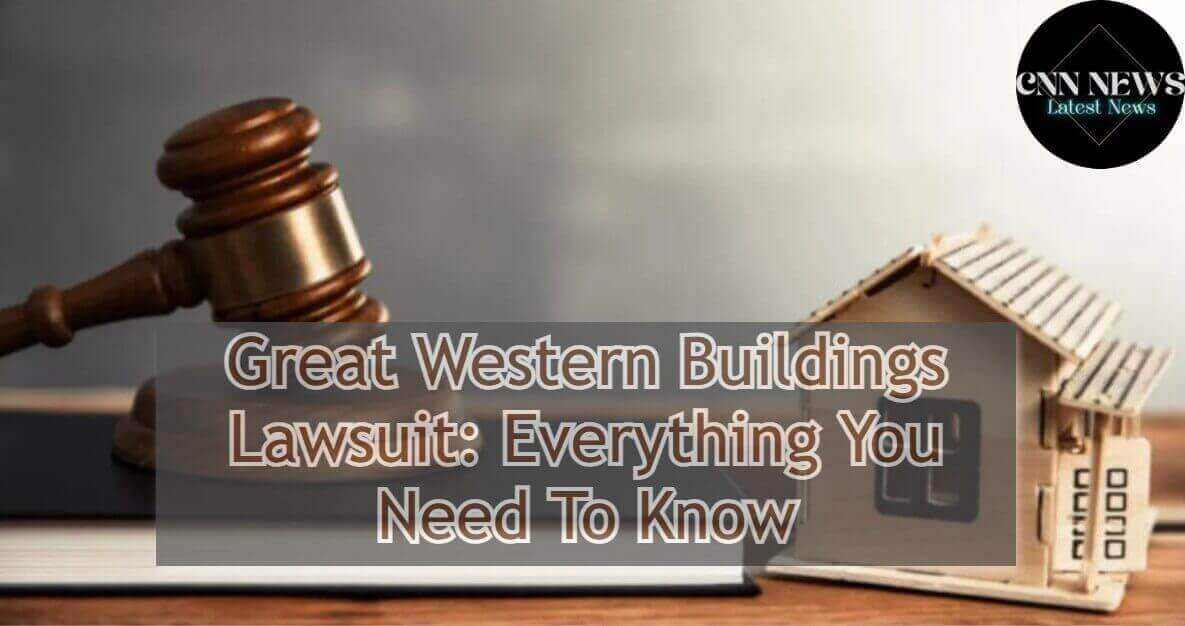Introduction:
The lawsuit about Great Western Buildings is a big deal in the construction and real estate world. It has caught the interest of experts, lawyers and regular people.
This case is all about complicated arguments and accusations. It brings attention to important problems in building contracts, who is responsible for what and making sure customers are protected.
It’s not just about the people directly involved; it teaches us important things about how real estate projects work, the promises made in contracts and the rules that control them.
History Of Great Western Buildings Lawsuit
The Great Western Buildings lawsuit started because there were problems between the company (GWB) building the fancy commercial buildings and the people who paid for them. GWB, a well-known construction firm, wanted to make impressive buildings with the latest features in a great location.
But as the project went on, some people who invested a lot of money in it started getting worried. They complained about construction delays and changes that were not what they agreed upon.
Things got worse when some clients, unhappy with how Great Western Buildings handled their complaints, decided to go to court. They said GWB broke the contract, didn’t do the job right and wanted money to make up for the big financial losses they suffered.
This legal case goes way back to the 1800s and involves a special building in Mumbai, India, called the Great Western Building. Over time, it has been used for different things, like a governor’s house, a navy office and even a hotel.
In 1883, they turned it into the Great Western Hotel and later added more floors to it. But after the hotel closed, they split the rooms into smaller parts for people to rent.
The lawsuit is about arguments over who owns and has the right to stay in these divided units. It’s a complicated case with lots of legal problems to figure out.
Legal Arguments Of Great Western Buildings Lawsuit
The fight in court had many sides, with people making different claims and defenses. The ones suing (plaintiffs) said that Great Western Buildings didn’t do what they promised in the contract – the buildings weren’t good enough and weren’t safe.
They argued that the company not only broke the contract but also acted carelessly and didn’t care about the safety of the public.
On the other side, Great Western Buildings said the claims of carelessness and breaking the contract were not true. They argued that they followed all the rules and regulations while building and that some of the problems were either exaggerated or not related to their work.
They also said that some of the people suing them didn’t take care of their properties properly, which caused some of the issues.
As the case went through the legal process, it involved looking closely at building rules, contracts and what is considered standard in the industry. Experts in construction, real estate and safety were called to share their knowledge, making the whole thing even more complicated.
Explanation And Importance Of Great Western Buildings Lawsuit
The Great Western Buildings lawsuit was a big deal in the early 1970s in Chicago, Illinois. It was about a bunch of buildings on Great Western Avenue. The owner, Arthur Rubloff, wanted to tear them down and put up a new tall building. But some people who wanted to protect historic places said these old buildings were important and should be saved.
This lawsuit is important because it was one of the first times a court had to decide if historic buildings could be torn down by their owners. Before this, there weren’t many rules to stop people from destroying old buildings with historical value. Lots of important places were being destroyed because there weren’t strong laws to protect them.
At that time, people were starting to care more about keeping old buildings and not letting them get destroyed. Groups like the Landmarks Preservation Council were created to push for better laws to save historic places.
The Great Western Buildings case was a big deal because it was a clash between two groups – the developers who wanted to make money by building new things and the preservationists who wanted to save old buildings. This case became an important example for deciding who gets to make decisions about private properties with history.
After many legal moves and appeals, the case reached the highest court in Illinois. In a big decision, the court sided with the preservationists, saying the buildings were indeed important historically and should be protected from being torn down.
This decision was really important because it showed that even if a property is privately owned, the government can still make rules to protect it if it’s historically valuable. This ruling set a strong example for future cases about saving historic places and deciding what owners can and cannot do with their properties.
So, even though the Great Western Buildings lawsuit was about a few buildings in Chicago. Its impact reached far and wide in how we think about saving historic places and property rights today.
Key Players Involved In This Case:
The Great Western Buildings Lawsuit was a very important court case that changed how buildings are made in the United States. Different people and groups played important roles in deciding what happened in this case.
Let’s look at who these important players were:
- Great Western Buildings Company: This company built the buildings that caused all the problems. The boss of the company and the management team got into a lot of trouble because the buildings they made were not safe, according to the city.
- City Council of Chicago: This group was like the boss of the city and they made rules about how buildings should be made to keep people safe. They also checked buildings to make sure they followed the rules.
- John Egan: He was a very important designer who planned how the buildings should look. He defended his designs in court, saying they were good and safe.
- William Le Baron Jenney: He was a famous architect who knew a lot about building tall structures. He helped both sides in court by explaining important things about how buildings should be made.
- Daniel Burnham: He was a well-known architect who helped people suing Great Western Buildings Company because their buildings caused damage to nearby properties.
- Elmer Corthell: He was an engineer hired by Great Western Buildings Company to say their way of building was not the reason for the problems.
- Daniel Webster Mead: He was an engineer who helped many people involved in the case, giving important information about how well the Great Western Buildings were made.
- Chicago Architectural Club: This group of architects and engineers cared a lot about making buildings safe. They pushed for better rules and laws about building safety in Chicago.
All these important people and groups had a say in what happened in the Great Western Buildings Lawsuit. They talked about how the buildings were made, who was responsible for the problems and what rules should be in place to make sure buildings are safe.
Their involvement not only affected the court case but also made people pay more attention to making buildings safe and following the rules.
Great Western Buildings Review
Great Western Buildings has received positive reviews, earning an impressive 4.2 out of 5 stars. Customers have praised the company for its commitment to quality and innovative design in the construction of pre-built steel buildings. The ease of assembly and durability of their structures has been highlighted as key strengths.
The favorable rating suggests a high level of satisfaction among clients, indicating that Great Western Buildings is a reputable choice for those seeking reliable and well-crafted building solutions. The positive reviews underscore the company’s success in delivering on customer expectations.
Benefits Of Great Western Buildings Lawsuit
While I don’t have specific information about the benefits of Great Western Buildings, companies in the construction industry often provide various advantages such as:
- Quality Construction: Great Western Buildings may be known for delivering well-constructed and durable structures.
- Innovative Designs: The company could offer innovative and modern designs for pre-built steel buildings.
- Ease of Assembly: Customers may appreciate the ease of assembling buildings provided by Great Western, making the construction process more straightforward.
- Customer Satisfaction: Positive reviews and ratings could indicate a high level of customer satisfaction with the company’s services and products.
- Versatile Use: Great Western Buildings may cater to various needs, including residential, commercial and industrial purposes, offering versatility in their construction solutions.
Conclusion:
In conclusion, the Great Western Buildings Lawsuit marked a turning point in construction, real estate and historic preservation.
This legal battle highlighted the complexities of building contracts, the responsibilities of developers and the importance of safeguarding consumer rights.
The clash between profit-driven developers and preservationists set a precedent, emphasizing that even privately owned historical properties can be subject to government protection. Key players, including the Great Western Buildings Company and influential architects, played crucial roles in shaping the outcome.
The legacy of this lawsuit extends beyond specific buildings, influencing how we approach historic preservation, property rights and construction practices today.




